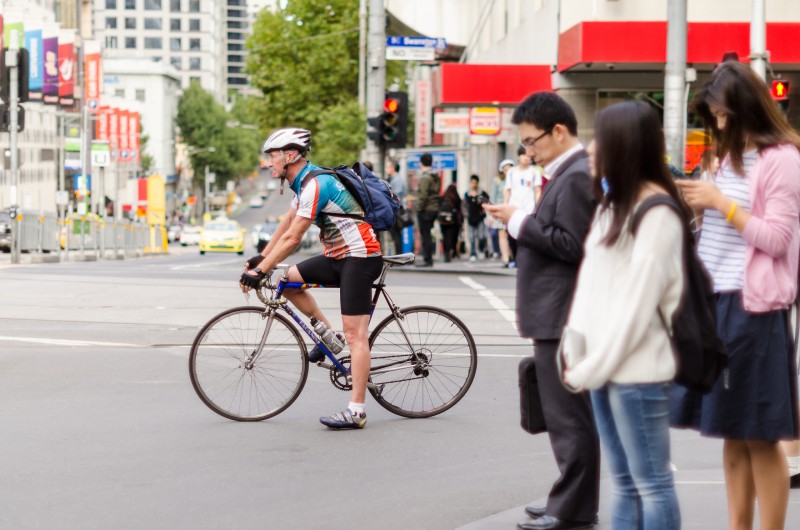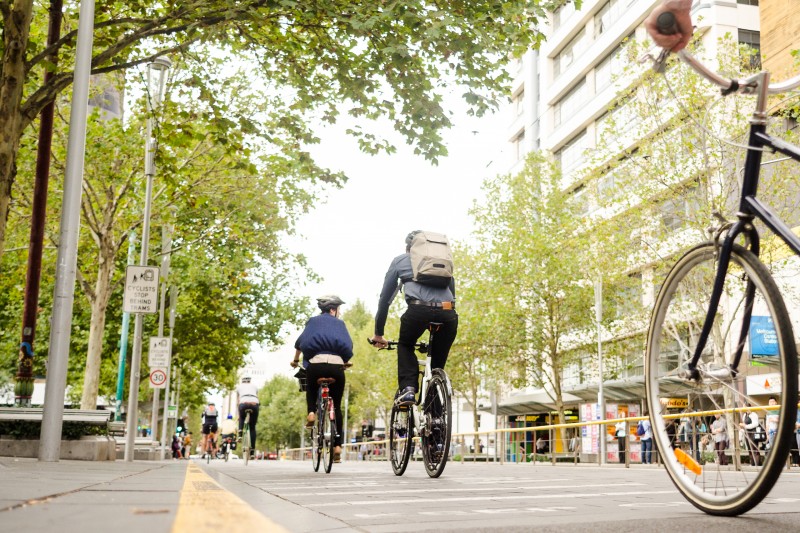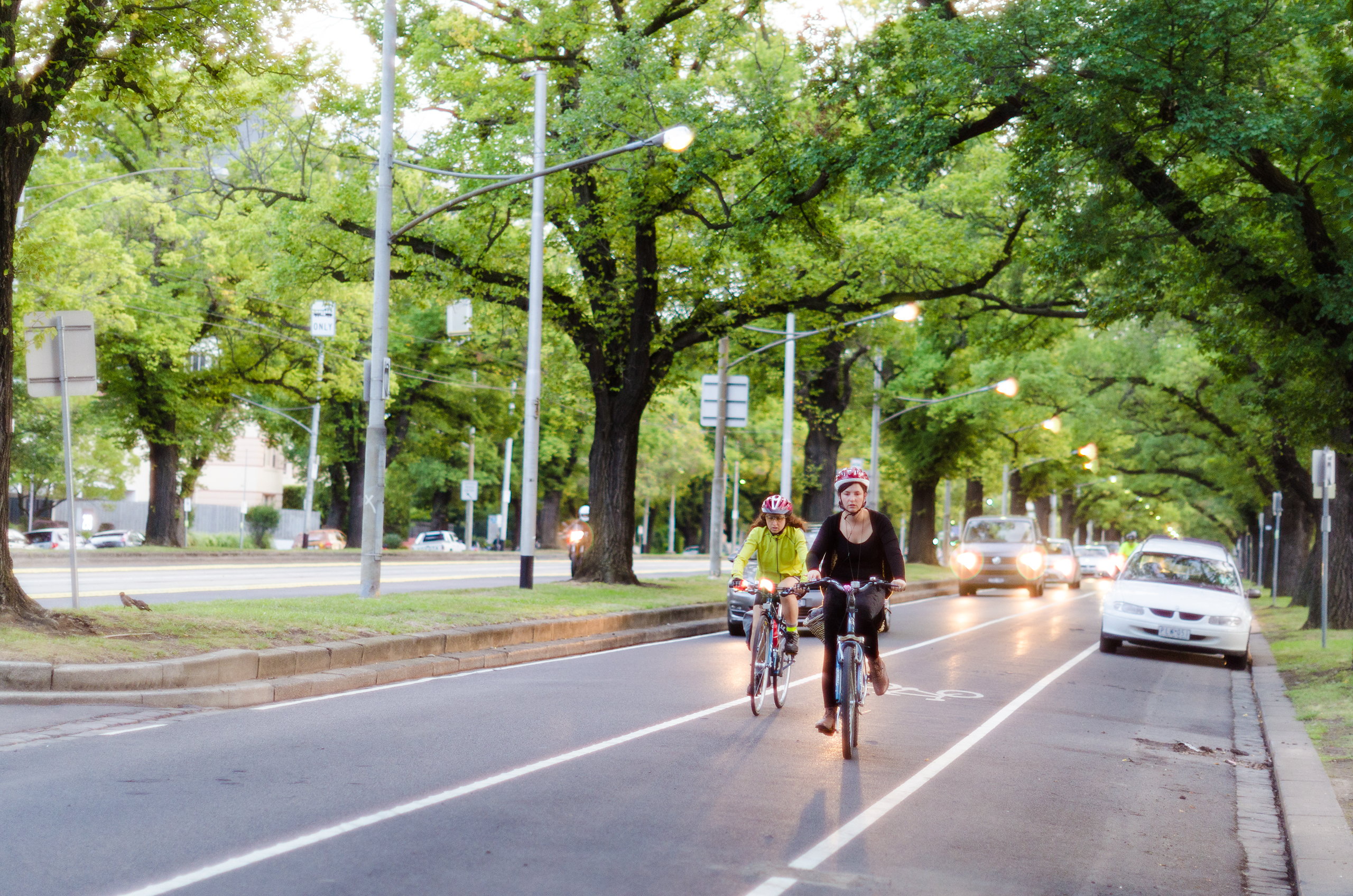For health, happiness, the good of the environment and your finances, everything points to the bicycle, as David Van Bergen explains.
A wise colleague once stated that life’s greatest moments were achieved by enjoying the little things. Enjoying the warmth of the sun as it radiates down on a clear crisp morning is one of the ways I follow this mantra. Although these mornings are few and far between during the months of a volatile Melbourne winter, I’ve discovered a simple, efficient and reliable manner in which to prolong these moments. Enter the humble bicycle. As it turns out, I’m not the only one who has made this discovery.
A recently released Australian Bicycle Council survey has found that around four million Australians ride a bicycle for recreation and transport in a typical week. This equates to one in six of all Australians. If that isn’t enough, this number is set to double by 2020 as governments and local councils focus on the rollout and improvement of bicycle infrastructure and services as a means of reducing inner-city traffic congestion and the strain on an already stretched public transport system.
Riding to work is now as easy as ever. Melbourne, my home city, has a fantastic network of off-road and on-road bicycle paths and lanes to suit riders of all abilities—and the same is true of most other major Australian cities. The key is finding a route that you as a rider would be comfortable to take.
Once I had mapped out a plan, I did practice rides over a couple of weekends to confirm that the pathway was suitable. This offered a great chance to test the bike and see if I needed any essential gear such as drink bottle holders and a large enough backpack to carry all of my work clothing. Many workplaces have end-of-trip facilities, such as lockers, change rooms, and showers, where transitioning back into the work environment can be achieved quickly and efficiently. The key to a smooth transition is establishing a routine that once set, will save invaluable time.

So what’s in it for you?
Riding to work just makes sense. Not only is it a healthy low-impact exercise, by undertaking it regularly as with all physical activity, it can help reduce your risk of suffering from serious diseases such as obesity, heart disease and other problems associated with a sedentary lifestyle. It also releases endorphins that trigger a positive feeling in the body and can lead to higher productivity in the workplace.
It is fun
The buzz and adventure from being outdoors and coasting down hills means you are more likely to continue to ride regularly compared to other forms of physical exercise that keep you indoors, such as going to the gym.
It can help in more ways than one
My 11km journey from home to work is 45 minutes by tram, 30 minutes by a combination of taking the train and walking from the station, 20 minutes by car, and 25 minutes by bicycle. By riding to work, it is the most time-efficient method to combine regular exercise into your everyday routine as well as being generally on par if not quicker than other forms of transport during peak hours in major cities. Given that cycling can be as intense as you choose, it can be great for those recovering from injury or illness to slowly increase their physical capacity. By riding to work each day you are bound to save money. This saving can vary from $2,000 a year and beyond, depending on if you either drive or take public transport into work. In an environment where transport is second to food as the largest item of household expenditure in Australia, the savings can quickly add up.
What steps can I take to be safe?
While riding to work is both fun and great for your health, precautionary steps need to be taken to make each ride as safe as possible. It’s an inescapable fact that cycling injuries and even deaths can occur if you are not prepared. Here are some of my top tips:
- Wear a helmet on every ride. Not only is it a legal requirement, head injuries are the most likely cause of cycling-related deaths.
- Wear bright clothing so that you’ll always be visible. When riding at night, ensure that you have appropriate front and rear bike lights as well as reflective gear—moving areas like your ankles and legs have been shown to be most visible.
- Obey traffic laws. It is a requirement for bikes to follow the same road rules as other road vehicles. Keep to the left of the bike lane and use hand signals before turning.
- Stay alert. Always check for road debris, turning vehicles and opening car doors. This last point is particularly relevant when riding next to parked cars.
- Be comfortable. Always wear appropriate clothing and footwear. A good tip for winter that I always remember is if you start your ride and you’re not cold, then you’re wearing too many layers.
- Be prepared. Ensure you carry a mobile phone and a puncture repair kit if you run into any problems. Always maintain and service your bike so it’s in perfect working order.

Helping the environment
According to a Queensland Government report, by riding to work 10km each way, you alone would be saving 1,500kg of greenhouse gas emissions each year. Add to this that a further 13 million tonnes of greenhouse gases are accounted for by interruptions to traffic flow in Australia’s six major cities, by cycling during peak hours the emission reduction would be even greater.
Riding a bike is a form of exercise that can bring much enjoyment into your life. Simple by nature, the humble bicycle has exploded in popularity over the last few years with the inclusion of urban cycleways in major cities worldwide. Not only is it a healthy, low-impact exercise, it is the most time-efficient method to combine regular exercise into your everyday routine.
By riding daily, significant savings can be made both financially and environmentally, while also leaving employers with individuals that are highly productive.
Life really is about enjoying the little things, and for its ability to open up a world of possibilities, the bicycle might just be the most important little thing of all.
This article first appeared on Beca’s thought leadership platform ‘Ignite Your Thinking’.
Photography: Hormuzd Khodaiji

